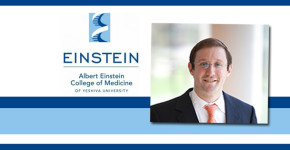
A process known as rescue karyotyping is allowing doctors to look back into the genetic history of a miscarriage.
Zev Williams, assistant professor of obstetrics & gynecology and women’s health and of genetics at the Albert Einstein College of Medicine, is researching this analytic technique.
Zev Williams, M.D., Ph.D., is assistant professor of obstetrics & gynecology and women’s health and of genetics at Albert Einstein College of Medicine and director of the Program for Early and Recurrent Pregnancy Loss (PEARL) at Einstein and Montefiore Medical Center, Einstein’s university hospital. His clinical and research focus is infertility with a special emphasis in helping those suffering from recurrent miscarriages. Dr. Williams completed his residency in obstetrics and gynecology at the Brigham and Women’s Hospital/Massachusetts General Hospital at Harvard Medical School and his fellowship in reproductive endocrinology and infertility at Weill-Cornell.
Zev Williams – Rescue Karyotyping
Miscarriage still remains a largely taboo topic, yet it is the most common complication of pregnancy occurring in about 1-in-5 pregnancies.
The vast majority of miscarriages are caused by having either too much or too little genetic material, such as an extra chromosome. However, for the about 5% of couples who suffer from recurrent miscarriage – defined as three or more miscarriages – the underlying cause of miscarriage and whether it is due to a chromosomal abnormality needs to be investigated.
Because a first or second miscarriage is likely to be due to a sporadic or random chromosomal abnormality, current treatment guidelines recommend against testing the miscarriage tissue for chromosomal abnormalities. The problem with this approach is that if a woman goes on to have more miscarriages, it is not always possible to obtain enough tissue from the subsequent pregnancy to send for testing. In those cases, it would have been helpful to know whether the genetic material from the prior miscarriage was abnormal or not.
Until recently, testing chromosomes from miscarriage tissue had to be done at the time of the miscarriage using a technique called karyotyping. This technique involves growing some of the cells from the placenta of the miscarriage and then examining them under a microscope to see if there is extra or missing genetic material. Thus, the tissue has to be living and growing in order for a karyotype to be performed.
Our new technique that we called “rescue karyotyping” allows us to test tissue from a miscarriage that could have occurred in the past (even years ago). This technique had been used previously in oncology to obtain genetic information from tumor samples and in miscarriages, but we wanted to systematically determine its effectiveness with miscarriage samples. We also modified the technique to allow us to be better able to get a diagnosis in miscarriage tissues.
What we found was that 80% of the time, rescue karyotyping allowed us to get a clinically meaningful diagnosis. In cases where the rescue karyotype result was abnormal, having a definitive cause for the miscarriage provided a sense of closure to the family. In cases where the rescue karyotype result was normal, it suggested that there may be another, underlying, cause for the miscarriage and prompted a much more thorough and comprehensive evaluation.
Read More: Miscarriage Clues Identified in New DNA Test According to Researchers at Montefiore and Einstein
